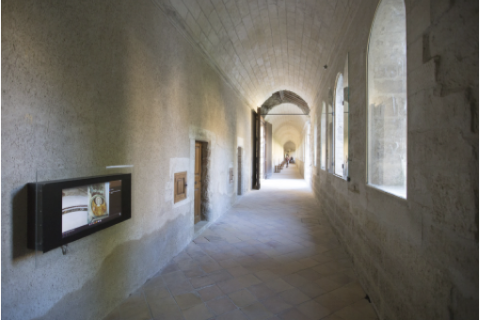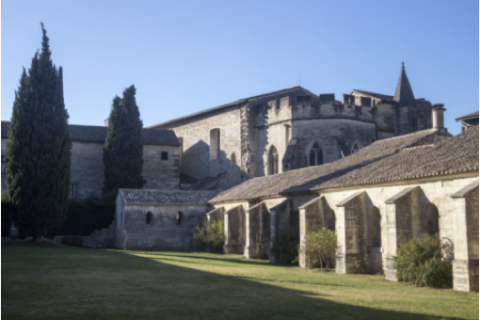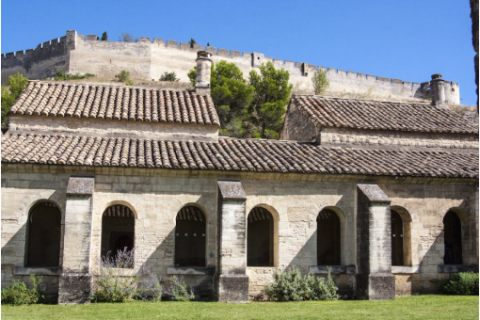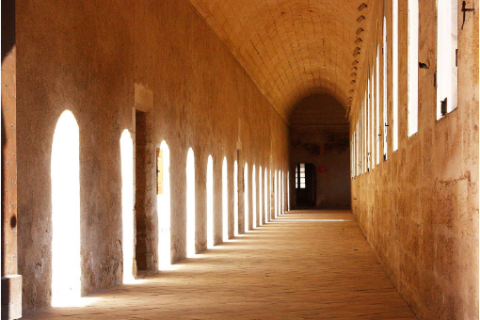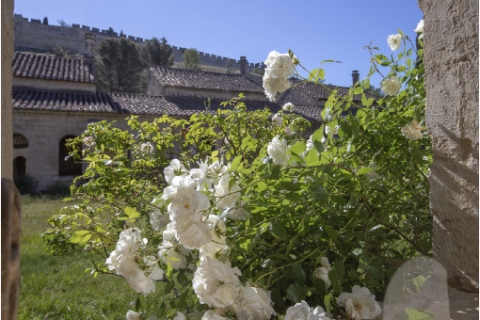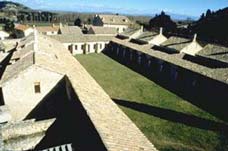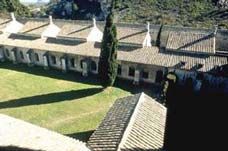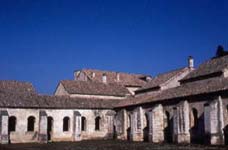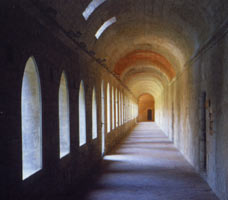The grand cloister goes back to the earliest foundation of La Chartreuse. Each of the cells of the twelve monks opens on to the cloister. The cells as we seem them today replaced the early cells, most likely made from wood, and date from 1610. Each monk’s cell has an alphabetical sign which identifies it and a little window to pass the meals into the cell.
The Cloister is also restful green space. To the south, near the church lies the monks’ cemetery where the monks were laid to rest directly in the ground. The small chapel by the cemetery is thus known as the “Chapel of the Dead”.
Below we see a row of monks’ cells and the roof of the chapel of the dead.
Medieval rites called for the deceased monk to be washed on a stone.
Today the monks’ cells are used by authors, actors or directors who are currently in residence at the National Theatre-Writing Centre (Centre National des Ecritures du Spectacle).
Above, centre: northeast corner of the cloister. The highest roof covers the prison and the bugade. Right: the east wing of the cloister.


